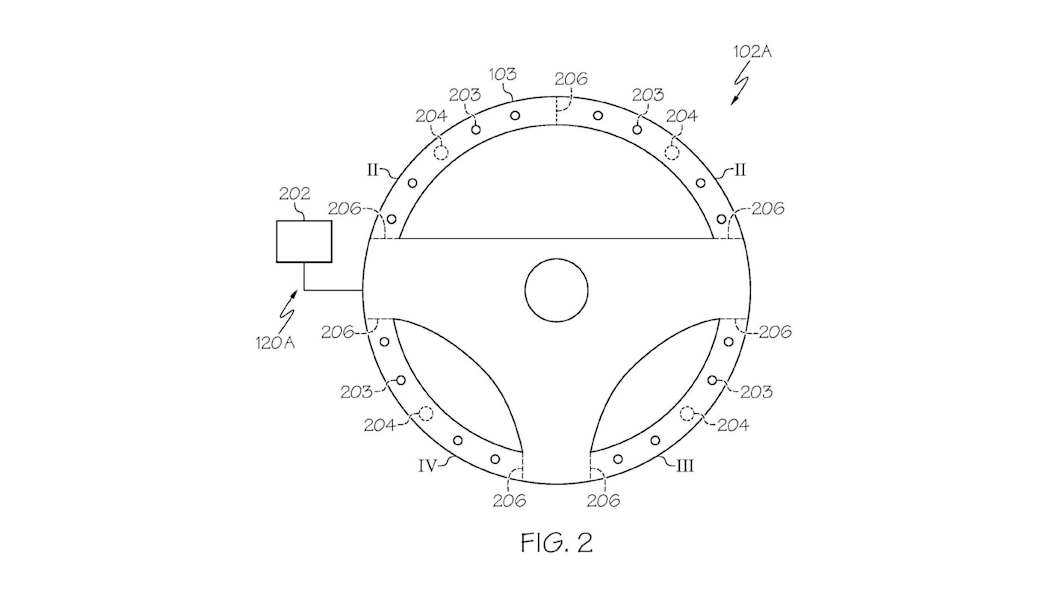In terms of driver control, there may be no interface more sacred than the steering wheel. Attempts to recreate it have provoked justifiable anger, as nothing seems to violate our sense of mastery over the vehicle than modifications to this humble hoop. That’s not stopping automakers, though, and the latest steering wheel rethink comes from Toyota in the form of a rim that changes thickness in the blink of an eye.
The reason, Toyota says in a patent application discovered by a user on NewNissanZ (full PDF here), is that existing lane warning methods can distract the driver. These include beeps, flashing lights, steering wheel vibrations or even a subtle push in the opposite direction when the computer thinks the driver is drifting out of a lane.
Such warnings can be helpful, but can also be a nuisance or even harmful, for example if the flashing warning causes the driver to look away from the road, or if the steering wheel is pushed back when the driver actually plans to change lanes.
Toyota’s solution? A handlebar that uses expansion and contraction of the rim to warn the driver. Embedded into the edge of the handlebar are points that can be thicker or thinner to vary the friction between the driver’s hand and the handlebar. The thicker the section, the greater the friction and vice versa. When the friction increases, it acts as a reminder, or even elicits a subtle jerk, which can help keep the car centered in its lane.
The thickness would be determined by small actuators installed around the rim. These can take the form of a small spring that expands or contracts, an inflation/deflation device or a miniature cam. Electronically activated, they allow part of the rim to expand or contract while others remain constant.
In one diagram, Toyota illustrates how a driver can misjudge how much to turn the wheel to make a right turn. On the current trajectory, where the front wheels are not sharp enough, the car would go off the road. Presumably, the steering wheel expanding under the driver’s right hand, increasing friction, would cause a tug on the steering wheel to pull the car more tightly into the corner.
It’s hard to imagine what this would feel like in practice, but there’s potential in this solution. A sensory reminder works better than an auditory or visual warning, and this action can feel more organic than a push from the steering wheel itself. Or it can just feel weird and act like yet another invasion of our driving autonomy. It will be hard to judge until experienced, assuming the idea ever makes it into the real world.
Related video:
